#alpine hare
Photo
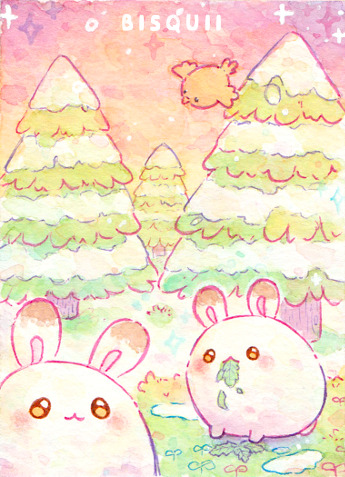
“A Patch of Spring”
An ATC (artist trading card) that I've created for an art trade! ^^
This card features two "alpine hares" and was created with watercolors.
The soft sunset helps me to create a warm atmosphere despite the the cold snow ♫
> Please do not repost, recreate, trace, edit or use my art, thanks~ :3
#alpine hare#watercolors#bunny#animal art#snow#winter#spring#pastel aesthetic#kawaii#painting#cute#traditional#drawing
528 notes
·
View notes
Photo

Source details and larger version.
48 notes
·
View notes
Photo

strongest mountain, softest snow // mountain hare
#moodboard#aesthetic#brown#white#green#beige#multicolor#mammal#mountain hare#tundra hare#snow hare#alpine hare#irish hare#mountains#snow#winter#nature#plants#floral#forest#trees#positive
17 notes
·
View notes
Text

Alpine hare
By: Renaud
From: Éditions Rencontre Cards
1976
3 notes
·
View notes
Text

Erklär mir die Tiere. Pipers Kinderlexikon. 1974.
#birds#raptors#eagles#golden eagles#vultures#alpine choughs#ptarmigans#finches#bramblings#bovids#caprids#chamois#ibex#bears#brown bears#lagomorphs#hares#rodents#marmots
265 notes
·
View notes
Text
Semifinals, Poll 5
White-tailed Ptarmigan vs Sickle-winged Nightjar


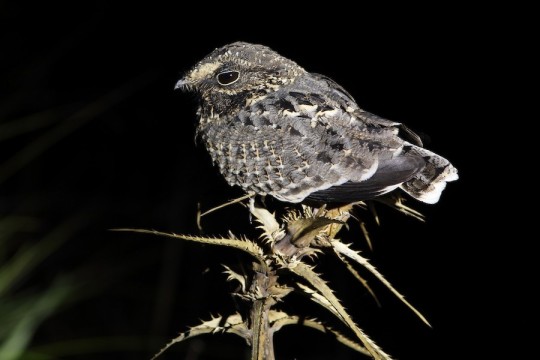
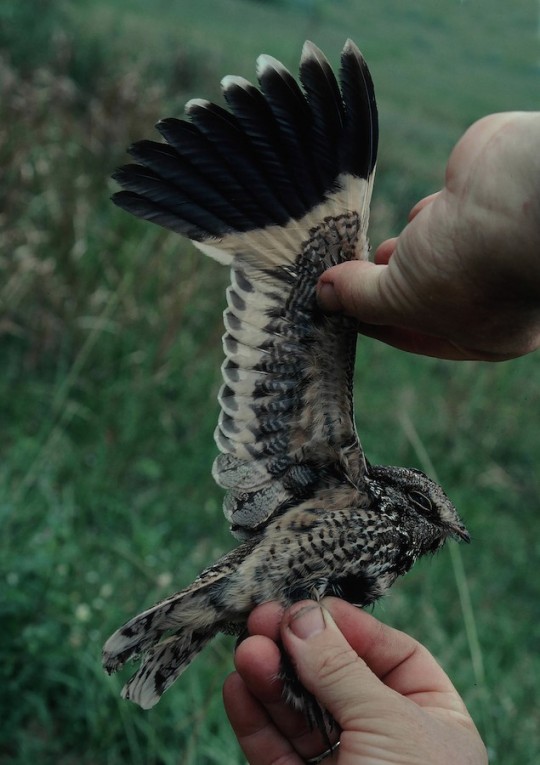
sources under the cut
White-tailed Ptarmigan (Lagopus leucura)
Lagopus is derived from Ancient Greek, meaning "hare foot". This is due to the heavily feathered legs and feet of ptarmigan.
eBird sightings: 5,809; IUCN Redlist Rating: Least Concern
Also known as the Snow Quail, this is the smallest bird in the grouse family. It serves as an indicator species for alpine tundra, and thankfully continues to fill a large range of western North America. The English name "ptarmigan" is Scottish Gaelic in origin, with 'tarmachan' meaning "croaker", referring to the bird's frog-like call. The p- was added due to a mistaken belief the word was Greek in origin, with the thinking being that the word related to 'pteron', "wing".
Sickle-winged Nightjar (Eleothreptus anomalus)
Eleothreptus, from Ancient Greek, means "marsh bred"
eBird sightings: 267; IUCN Redlist Rating: Vulnerable
There is not a lot of information on this bird, as nightjar are already cryptic and the common distribution of this bird hasn't been fully studied. They're currently found in northeastern Argentina, southern Paraguay, and southern Brazil. The Sickle-winged Nightjar shares its genus with a single other nightjar, which is also sparsely distributed across South America.
Images: Ptarmigan (summer - Garrett Hughes, winter - Josiah Verbrugge); Nightjar (wing - Kristof Zyskowski, body - Martjan Lammertink)
#aka: actually idk what thread is in common between these two. they're cute tho#hipster bird main bracket#white tailed ptarmigan#sickle winged nightjar#polls#caprimulgiformes#galliformes
36 notes
·
View notes
Text
Canis dingo, or maybe Canis lupus dingo, or maybe Canis familiaris dingo
Some researchers think dingoes are an ancient breed of domesticated dogs brought to Australia around 4,000 years ago by Asian seafarers. Others think they are a distinct species closely related to grey wolves and domestic dogs, similar to coyotes and jackals.
Either way, dingoes are very closely related to wolves and domestic dogs and are able to interbreed with them. Most dingoes in Australia now are mixed with many different dog breeds. One of these dingo-dog hybrids is the Australian cattle dog, which is a pretty popular dog breed used for herding cattle.
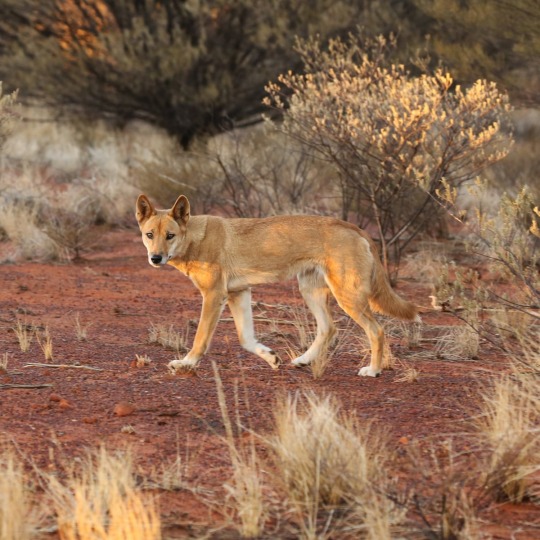
Dingoes are found in every state of Australia except for Tasmania. The dingo’s relative, the New Guinea singing dog, is also found in the mountains of New Guinea. Named for their unique yodeling howls, singing dogs are one of the most endangered canines in the world. They were believed to be extinct in the wild until a small population was found two years ago.

Those that live in the high Alpine habitats of southeast Australia are known as Alpine dingoes. They are often lighter in color and grow thicker coats than those that live in desert or forest habitats. Desert dingoes that live in northern Australia are the typical bright orange color. They are larger than other dingoes, generally weighing around 40 pounds (18 kg) with some reaching over 50 pounds (22.7 kg). There are dingoes that live in forests and have dark tan or black fur, but they are most likely not purebred.
Fraser Island off the east coast of Australia is home to around 200 dingoes. With no pet dogs on the Island, they are purebred. Fraser Island and Alpine dingoes are possibly the last populations that are not mixed with domestic dogs.
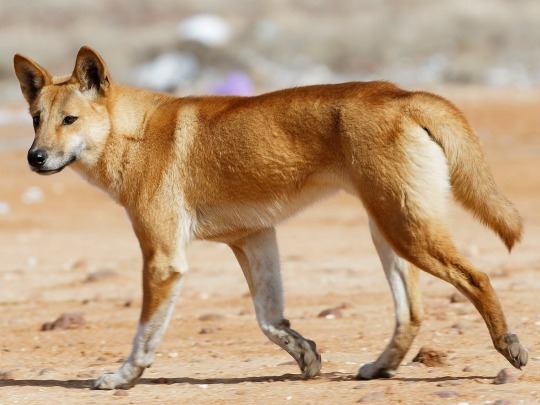
Often living in packs of up to 12 individuals, dingoes are very social. The dominant male and female of these packs are the parents of all the others. They rarely bark to communicate with each other, instead using a variety of howls.
In areas with small prey like hares, rodents, and reptiles, dingoes generally hunt alone. They still might live in packs, but they only rest and play with each other. In areas with larger prey like kangaroos and sheep, they hunt as a pack. Their tendency to hunt sheep causes farmers to target them, so the dingo population is classified by some as vulnerable but by others as endangered due to poisoning, trapping, and shooting.
Dingoes hunt by ganging up on larger prey with multiple pack members or by scaring small prey out of thickets and then pouncing. They are very flexible so they can follow prey into tight spaces. Like a cat, if a dingo’s head can fit through something, its whole body can.
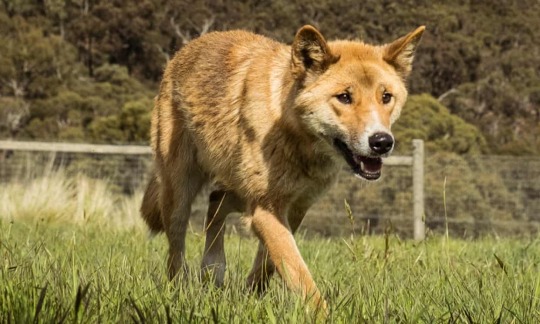
Wandi ^
I would also like to mention Wandi, who is a very good dingo. He was dropped by an eagle into a backyard when he was 5 weeks old. It was discovered soon after that he was a rare alpine dingo, so he went to live at the Dingo Discovery Sanctuary and Research Centre. He’s helping protect the species and he even has his own Instagram account.
I rate the dingo 17/10. A very Australian animal
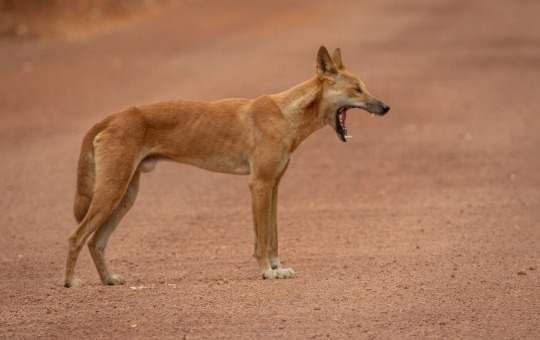
Photo credits:
(1) Jamie Lamb (2) Michelle J Photography (3) Michael Hains (4) Christopher Hopkins (5) tanyahattingh
#dingo#wild dog#Australia#animals#biology#nature#science#wildlife#zoology#animal#dog#dogs#wild#dingoes#wild dogs#canines#canids#canine#wolf#wolves
304 notes
·
View notes
Text
Mammals of the March of Maedhros
Fish, Birds, Flowers
Flora, fauna, geography and environment Masterlist
Other world building in the Himring tag!
The March of Maedhros was a cold realm in Northeastern Beleriand. It was located slightly Southeast of Dorthonion and south of the planes and meadowlands of Lothlann and Ard Galen. The March was a cold region with taiga forested hills and icy waters, including the sources of several rivers, namely Celon and Little Gelion which were located in the other Hills around Himring.
The March falls between the cold mountains on the Southern and Eastern borders of Dorthonion and the mountainous regions of the Gap and Thargelion on its own Eastern border.
Like my other posts of this kind I will include more world building notes at the end (relationship between people/elves and the fauna, symbology or significance of certain species in local cultures, etc), otherwise this would just be a long list of species. Please always feel free to ask more about this, it’s one of my favorite topics 
Taiga and tundra: musk deer: reindeer, red squirrel, tundra wolf, altai mole, brown bear, snow vole, taiga shrew
Other forest: forest dormouse, northern birch mouse, pine marten, sable, common shrew, northern pika, moose, lynx
Hills and alpine meadow: grey marmot, forest steppe marmot, long tailed ground squirrel, wild horse, beech marten, northern badger
Northern reaches: snow leopard, wild yak, snow sheep
Throughout: red fox, brown hare, Eastern roe deer, field mouse
World building notes:
-As it’s probably obvious by the art in my background, the idea of snow leopards in the March is very important to me! Some of the most skilled among Maedhros’s captains hunted and scouted along side them and their image came to represent the ruthless, efficient and precise nature of his fighters in art and heraldry 
-I also believe that they were wild otters in the rivers specifically northern Celon,the colder one, rather unique to the region. These were far larger than common otters and well adapted to the cold. 
-Horses were brought in large numbers, including the descendants of Valinor horses. In the March they are bred for endurance, and ability to withstand the cold and train to respond to almost entirely non-verbal commands, especially by some sections of the scouts who ride them
-I always imagine a location or locations similar to Lake Baikal in Siberia, which is home the world’s only completely freshwater seal as well as cnidarian species that are not found anywhere else in the world. The seals in thr near frozen lake are abundant but are rarely slain. They are near inedible though their fat is highly useful for oils and their skins are occasionally used as well. The lake is located north of Himring and was originally the result of geologic activity in the Ered Engrin.
-Reindeer are kept by some of the Noldor and their allies in the more remote regions of the march. Their fur, skin, meat, and milk are all used.
-Pine martens and sables are dear to the Avarin groups of northeast Beleriand, some members even taking them as companions or scouts. They represent will and joy in stories and art
-I like to imagine smaller species of mammoths or woolly rhinos trek through the March on their search for fresh grass and vegetation.
As always please feel free to ask more, I really love world building and I always feel these posts are incomplete
37 notes
·
View notes
Text
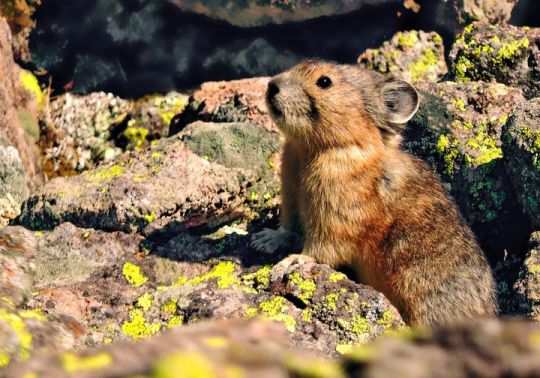
American Pika at Great Sand Dunes National Park and Preserve
They are tough and mighty, American pikas inhabit the talus-filled alpine tundra of western North America.
These furry mammals, frequently mistaken for their yellow electrical counterpart Pikachu, are herbivores that forage and gather grasses in the summertime to prepare for the cold and harsh winters where they continue to stay active under the snowpack.
Blending into the barren environment of the treeless and rock filled alpine tundra, their fur ranges in color from tan to brown. Due to their impressive camouflage efforts, American pikas are typically heard first before being seen. Often described as a lamb-like “bleating,” pikas use their high pitched squeals in an effort to protect their territories and to alert other pikas of an incoming predator.
Adapted to the near freezing summer temperatures of the tundra, American pikas are facing pressures with increasing temperatures limiting the suitable habitat needed for their survival. While many other species are shifting their habitats toward higher elevations to escape the heat, most pikas are already at the highest limits of their habitat.
Similar to polar bears, pikas have slowly become another indicator species to symbolize the potential effects of climate change.
Although not listed under the Endangered Species Act, pikas are under a potential threat with changing temperatures, and might be one of the first species, along with many more, to disappear from the region if we don’t come together to help and protect our unique wildlife.
Pikas are not rodents, but lagomorphs, related to rabbits and hares.
Photo: NPS/Patrick Myers
via: National Park Service
24 notes
·
View notes
Text
All animal species (and a couple algae) that have kept the same scientific name since Linnaeus
The first work of taxonomy that is considered as having any scientific authority for animal species was the 10th edition of Linnaeus' Systema Naturae, published in 1758. (Also a book on spiders called Aranei Suecici, published one year before.) That's the foundational text of the binominal system of nomenclature of species still in use today. Since then most of Linnaeus' original species (4379 species, of which 185 mammals, 554 birds, 217 "amphibians" (including reptiles and cartilaginous fish), 379 fishes, 2104 "insects" (including various arthropods, of which 664 are beetles and 543 are moths & butterflies crammed into only 3 genera), and 940 "worms" (including basically all other invertebrates, and even some protists and algae)) have been dismembered, renamed, or at least moved to different genera (e.g. the house sparrow went from Fringilla domestica to Passer domesticus).
Here is a list of all of Linnaeus' original species from 1758 that still retain their original name. I believe they are 484 in total.
"Mammalia"
(Primates)
Homo sapiens (human)
Lemur catta (ring-tailed lemur)
Vespertilio murinus (rearmouse bat)
(Bruta)
Elephas maximus (Asian elephant)
Trichechus manatus (West Indian manatee)
Bradypus tridactylus (three-toed sloth)
Myrmecophaga tridactyla (giant anteater)
Manis pentadactylus (Chinese pangolin)
(Ferae)
Phoca vitulina (harbor seal)
Canis familiaris (dog)
Canis lupus (grey wolf)
Felis catus (house cat)
Viverra zibetha (Indian civet)
Mustela erminea (stoat)
Mustela furo (ferret)
Mustela lutreola (European mink)
Mustela putorius (wild ferret)
Ursus arctos (brown bear)
(Bestiae)
Sus scrofa (wild boar/pig)
Dasypus septemcinctus (seven-banded armadillo)
Dasypus novemcinctus (nine-banded armadillo)
Erinaceus europaeus (European hedgehog)
Talpa europaea (European mole)
Sorex araneus (common shrew)
Didelphis marsupialis (common opossum)
(Glires)
Rhinoceros unicornis (Indian rhinoceros)
Hystrix brachyura (Malayan porcupine)
Hystrix cristata (crested porcupine)
Lepus timidus (common hare)
Castor fiber (European beaver)
Mus musculus (house mouse)
Sciurus vulgaris (red squirrel)
(Pecora)
Camelus dromedarius (dromedary camel)
Camelus bactrianus (Asian camel)
Moschus moschiferus (musk deer)
Cervus elaphus (red deer)
Capra hircus (goat)
Capra ibex (Alpine ibex)
Ovis aries (sheep)
Bos taurus (cow)
Bos indicus (zebu)
(Belluae)
Equus caballus (horse)
Equus asinus (donkey)
Equus zebra (mountain zebra)
Hippopotamus amphibius (hippopotamus)
(Cete)
Monodon monoceros (narwhal)
Balaena mysticetus (bowhead whale)
Physeter macrocephalus (sperm whale)
Delphinus delphis (common dolphin)
"Aves"
(Accipitres)
Vultur gryphus (Andean condor)
Falco tinnunculus (common kenstrel)
Falco sparverius (sparrowhawk)
Falco columbarius (pigeonhawk)
Falco subbuteo (Eurasian hobby)
Falco rusticolus (gyrfalcon)
Strix aluco (tawny owl)
Lanius excubitor (great grey shrike)
Lanius collurio (red-backed shrike)
Lanius schach (long-tailed shrike)
(Picae)
Psittacus erithacus (grey parrot)
Ramphastos tucanus (white-throated toucan)
Buceros bicornis (great hornbill)
Buceros rhinoceros (rhinoceros hornbill)
Crotophaga ani (smooth-billed ani)
Corvus corax (raven)
Corvus corone (carrion crow)
Corvus frugilegus (rook)
Corvus cornix (hooded crow)
Coracias oriolus (golden oriole)
Coracias garrulus (European roller)
Gracula religiosa (hill myna)
Paradisaea apoda (greater bird-of-paradise)
Cuculus canorus (common cuckoo)
Jynx torquilla (wryneck)
Picus viridis (green woodpecker)
Sitta europaea (Eurasian nuthatch)
Merops apiaster (European bee-eater)
Merops viridis (blue-throated bee-eater)
Upupa epops (Eurasian hoopoe)
Certhia familiaris (Eurasian treecreeper)
Trochilus polytmus (red-billed streamertail hummingbird)
(Anseres)
Anas platyrhynchos (mallard duck)
Anas crecca (teal duck)
Mergus merganser (common merganser)
Mergus serrator (red-breasted merganser)
Alca torda (razorbill auk)
Procellaria aequinoctialis (white-chinned petrel)
Diomedea exulans (wandering albatross)
Pelecanus onocrotalus (great white pelican)
Phaeton aethereus (red-billed tropicbird)
Larus canus (common gull)
Larus marinus (great black-backed gull)
Larus fuscus (lesser black-backed gull)
Sterna hirundo (common tern)
Rhynchops niger (black skimmer)
(Grallae)
Phoenicopterus ruber (American flamingo)
Platalea leucorodia (Eurasian spoonbill)
Platalea ajaia (roseate spoonbill)
Mycteria americana (wood stork)
Ardea cinerea (grey heron)
Ardea herodias (blue heron)
Ardea alba (great egret)
Scolopax rusticola (Eurasian woodcock)
Charadrius hiaticula (ringed plover)
Charadrius alexandrinus (Kentish plover)
Charadrius vociferus (killdeer plover)
Charadrius morinellus (Eurasian dotterel)
Recurvirostra avosetta (pied avocet)
Haematopus ostralegus (Eurasian oystercatcher)
Fulica atra (Eurasian coot)
Rallus aquaticus (water rail)
Psophia crepitans (grey-winged trumpeter)
Otis tarda (great bustard)
Struthio camelus (ostrich)
(Gallinae)
Pavo cristatus (Indian peafowl)
Meleagris gallopavo (wild turkey)
Crax rubra (great curassow)
Phasianus colchicus (common pheasant)
Tetrao urogallus (western capercaillie)
(Passeres)
Columba oenas (stock dove)
Columba palumbus (wood pigeon)
Alauda arvensis (Eurasian skylark)
Sturnus vulgaris (European starling)
Turdus viscivorus (mistle thrush)
Turdus pilaris (fieldfare thrush)
Turdus iliacus (redwing thrush)
Turdus plumbeus (red-legged thrush)
Turdus torquatus (ring ouzel)
Turdus merula (blackbird)
Loxia curvirostra (crossbill)
Emberiza hortulana (ortolan bunting)
Emberiza citrinella (yellowhammer)
Emberiza calandra (corn bunting)
Fringilla coelebs (common chaffinch)
Motacilla alba (white wagtail)
Motacilla lava (yellow wagtail)
Parus major (great tit)
Hirundo rustica (barn swallow)
Caprimulgus europaeus (European nightjar)
"Amphibia"
(Reptiles)
Testudo graeca (Greek tortoise)
Draco volans (flying dragon)
Lacerta agilis (sand lizard)
Rana temporaria (common frog)
(Serpentes)
Crotalus horridus (timber rattlesnake)
Crotalus durissus (tropical rattlesnake)
Boa constrictor (common boa)
Coluber constrictor (eastern racer)
Anguis fragilis (slowworm)
Amphisbaena alba (red worm lizard)
Caecilia tentaculata (white-bellied caecilian)
(Nantes)
Petromyzon marinus (sea lamprey)
Raja clavata (thornback ray)
Raja miraletus (brown ray)
Squalus acanthias (spiny dogfish)
Chimaera monstrosa (rabbitfish)
Lophius piscatorius (anglerfish)
Acipenser sturio (sea sturgeon)
Acipenser ruthenus (sterlet sturgeon)
"Pisces"
(Apodes)
Muraena helena (Mediterranean moray)
Gymnotus carapo (banded knifefish)
Trichiurus lepturus (cutlassfish)
Anarhichas lupus (Atlantic wolffish)
Ammodytes tobianus (lesser sandeel)
Xiphias gladius (swordfish)
Stromateus fiatola (blue butterfish)
(Jugulares)
Callionymus lyra (common dragonet)
Uranoscopus scaber (stargazer)
Trachinus draco (greater weever)
Gadus morhua (Atlantic cod)
Blennius ocellaris (butterfly blenny)
Ophidion barbatum (snake cusk-eel)
(Thoracici)
Cyclopterus lumpus (lumpsucker)
Echeneis naucrates (sharksucker)
Coryphaena equiselis (pompano)
Coryphaena hippurus (dorado)
Gobius niger (black goby)
Govius paganellus (rock goby)
Cottus gobio (European bullhead)
Scorpaena porcus (black scorpionfish)
Scorpaena scrofa (red scorpionfish)
Zeus faber (John Dory)
Pleuronectes platessa (European plaice)
Chaetodon striatus (banded butterflyfish)
Chaetodon capistratus (foureye butterflyfish)
Sparus aurata (gilt-head bream)
Labrus merula (brown wrasse)
Labrus mixtus (cuckoo wrasse)
Labrus viridis (green wrasse)
Sciaena umbra (brown meagre)
Perca fluviatilis (European perch)
Gasterosteus aculeatus (three-spined stickleback)
Scomber scombrus (Atlanti mackerel)
Mullus barbatus (red mullet)
Mullus surmuletus (surmullet)
Trigla lyra (piper gurnard)
(Abdominales)
Cobitis taenia (spined loach)
Silurus asotus (Amur catfish)
Silurus glanis (Wels catfish)
Loricaria cataphracta (suckermouth catfish)
Salmo carpio (Garda trout)
Salmo trutta (brown trout)
Salmo salar (Atlantic salmon)
Fistularia tabacaria (bluespotted cornetfish)
Esox lucius (northern pike)
Argentina sphyraena (European argentine)
Atherina hepsetus (Mediterranean sand smelt)
Mugil cephalus (flathead mullet)
Exocoetus volitans (tropical flying fish)
Polynemus paradiseus (Paradise threadfin)
Clupea harengus (Atlantic herring)
Cyprinus carpio (common carp)
(Branchiostegi)
Mormyrus caschive (bottlenose elephantfish)
Balistes vetula (queen triggerfish)
Ostracion cornutus (longhorn cowfish)
Ostracion cubicus (yellow boxfish)
Tetraodon lineatus (Fahaka pufferfish)
Diodon hystrix (spot-fin porcupinefish)
Diodon holocanthus (long-spine porcupinefish)
Centriscus scutatus (grooved shrimpfish)
Syngnathus acus (common pipefish)
Syngnathus pelagicus (pelagic pipefish)
Syngnathus typhle (broad-nosed pipefish)
Pegasus volitans (longtail seamoth)
"Insecta"
(Coleoptera)
Scarabaeus sacer (sacred scarab)
Dermestes lardarius (larder beetle)
Dermestes murinus (larder beetle)
Hister unicolor (clown beetle)
Hister quadrimaculatus (clown beetle)
Silpha obscura (carrion beetle)
Cassida viridis (tortoise beetle)
Cassida nebulosa (tortoise beetle)
Cassida nobilis (tortoise beetle)
Coccinella trifasciata (ladybug)
Coccinella hieroglyphica (ladybug)
[Coccinella 5-punctata, 7-punctata, 11-punctata, and 24-punctata survive as quinquepunctata, septempunctata, undecimpunctata, and vigintiquatorpunctata]
Chrysomela populi (leaf beetle)
Chrysomela lapponica (leaf beetle)
Chrysomela collaris (leaf beetle)
Chrysomela erythrocephala (leaf beetle)
Curculio nucum (nut weevil)
Attelabus surinamensis (leaf-rolling weevil)
Cerambyx cerdo (capricorn beetle)
Leptura quadrifasciata (longhorn beetle)
Cantharis fusca (soldier beetle)
Cantharis livida (soldier beetle)
Cantharis oscura (soldier beetle)
Cantharis rufa (soldier beetle)
Cantharis lateralis (soldier beetle)
Elater ferrugineus (rusty click beetle)
Cicindela campestris (green tiger beetle)
Cicindela sylvatica (wood tiger beetle)
Buprestis rustica (jewel beetle)
[Buprestis 8-guttata survives as octoguttata]
Dytiscus latissimus (diving beetle)
Carabus coriaceus (ground beetle)
Carabus granulatus (ground beetle)
Carabus nitens (ground beetle)
Carabus hortensis (ground beetle)
Carabus violaceus (ground beetle)
Tenebrio molitor (mealworm)
Meloe algiricus (blister beetle)
Meloe proscarabaeus (blister beetle)
Meloe spec (blister beetle)
Mordela aculeata (tumbling glower beetle)
Necydalis major (longhorn beetle)
Staphylinus erythropterus (rove beetle)
Forficula auricularia (common earwig)
Blatta orientalis (Oriental cockroach)
Gryllus campestris (field cricket)
(Hemiptera)
Cicada orni (cicada)
Notonecta glauca (backswimmer)
Nepa cinerea (water scorpion)
Cimex lectularius (bedbug)
Aphis rumici (black aphid)
Aphis craccae (vetch aphid)
Coccus hesperidum (brown scale insect)
Thrips physapus (thrips)
Thrips minutissimum (thrips)
Thrips juniperinus (thrips)
(Lepidoptera)
Papilio paris (Paris peacock butterfly)
Papilio helenus (red Helen butterfly)
Papilio troilus (spicebush swallowtail butterfly)
Papilio deiphobus (Deiphobus swallowtail butterfly)
Papilio polytes (common Mormon butterfly)
Papilio glaucus (eastern tiger swallowtail butterfly)
Papilio memnon (great Mormon butterfly)
Papilio ulysses (Ulysses butterfly)
Papilio machaon (Old World swallowtail butterfly)
Papilio demoleus (lime swallowtail butterfly)
Papilio nireus (blue-banded swallowtail butterfly)
Papilio clytia (common mime butterfly)
Sphinx ligustri (privet hawk-moth)
Sphinx pinastri (pine hawk-moth)
[genus Phalaena was suppressed, but seven subgenera created by Linnaeus are now valid as genera]
(Neuroptera)
Libellula depressa (chaser dragonfly)
Libellula quadrimaculata (four-spotted skimmer dragonfly)
Ephemera vulgata (mayfly)
Phryganea grandis (caddisfly)
Hemerobius humulinus (lacewing)
Panorpa communis (scorpionfly)
Panorpa germanica (scorpionfly)
Raphidia ophiopsis (snakefly)
(Hymenoptera)
Cynips quercusfolii (oak gall wasp)
Tenthredo atra (sawfly)
Tenthredo campestris (sawfly)
Tenthredo livida (sawfly)
Tenthredo mesomela (sawfly)
Tenthredo scrophulariae (sawfly)
Ichneumon extensorius (parasitoid wasp)
Ichneumon sarcitorius (parasitoid wasp)
Sphex ichneumoneus (digger wasp)
Vespa crabro (European hornet)
Apis mellifera (honey bee)
Formica fusca (silky ant)
Mutilla europaea (large velvet ant)
(Diptera)
Oestrus ovis (sheep botfly)
Tipula oleracea (marsh cranefly)
Tipula hortorum (cranefly)
Tipula lunata (cranefly)
Musca domestica (housefly)
Tabanus bovinus (pale horsefly)
Tabanus calens (horsefly)
Tabanus bromius (brown horsefly)
Tabanus occidentalis (horsefly)
Tabanus antarcticus (horsefly)
Culex pipiens (house mosquito)
Empis borealis (dance fly)
Empis pennipes (dance fly)
Empis livida (dance fly)
Conops flavipes (thick-headed fly)
Asilus barbarus (robberfly)
Asilus crabroniformis (hornet robberfly)
Bombylius major (bee fly)
Bombylius medius (bee fly)
Bombylius minor (bee fly)
Hippobosca equina (forest fly)
(Aptera)
Lepisma saccharina (silverfish)
Podura aquatica (water springtail)
Termes fatale (termite)
Pediculus humanus (human louse)
Pulex irritans (human flea)
Acarus siro (flour mite)
Phalangium opilio (harvestman)
Araneus angulatus (orb-weaving spider)
Araneus diadematus (European garden spider)
Araneus marmoreus (marbled orbweaver)
Araneus quadratus (four-spotted orbweaver -- last four are by Clerck 1757, some of the very few surviving pre-Linnean names!)
Scorpio maurus (large-clawed scorpion)
Cancer pagurus (brown crab)
Oniscus asellus (common woodlouse)
Scolopendra gigantea (giant centipede)
Scolopendra morsitans (red-headed centipede)
Julus fuscus (millipede)
Julus terrestris (millipede)
"Vermes"
(Intestina)
Gordius aquaticus (horsehair worm)
Lumbricus terrestris (common earthworm)
Ascaris lumbricoides (giant roundworm)
Fasciola hepatica (liver fluke)
Hirudo medicinalis (medicinal leech)
Myxine glutinosa (Atlantic hagfish)
Teredo navalis (shipworm)
[shout out to Furia infernalis, a terrifying carnivorous jumping worm that Linnaeus described, but which doesn't seem to actually exist]
(Mollusca)
Limax maximus (leopard slug)
Doris verrucosa (warty nudibranch)
Nereis caerulea (ragworm)
Nereis pelagica (ragworm)
Aphrodita aculeata (sea mouse)
Lernaea cyprinacea (anchor worm)
Scyllaea pelagica (Sargassum nudibranch)
Sepia officinalis (common cuttlefish)
Asterias rubens (common starfish)
Echinus esculentus (edible sea urchin)
(Testacea)
Chiton tuberculatus (West Indian green chiton)
Lepas anatifera (goose barnacle)
Pholas dactylus (common piddock)
Mya arenaria (softshell clam)
Mya truncata (truncate softshell)
Solen vagina (razor clam)
Tellina laevigata (smooth tellin)
Tellina linguafelis (cat-tongue tellin)
Tellina radiata (sunrise tellin)
Tellina scobinata (tellin)
Cardium costatum (ribbed cockle)
Donax cuneatus (wedge clam)
Donas denticulatus (wedge clam)
Donax trunculus (wedge clam)
Venus casina (Venus clam)
Venus verrucosa (warty venus)
Spondylus gaederopus (thorny oyster)
Spondylus regius (thorny oyster)
Chama lazarus (jewel box shell)
Chama gryphoides (jewel box shell)
Arca noae (Noah's ark shell)
Ostrea edulis (edible oyster)
Anomia aurita (saddle oyster)
Anomia ephippium (saddle oyster)
Anomia hysterita (saddle oyster)
Anomia lacunosa (saddle oyster)
Anomia spec (saddle oyster)
Anomia striatula (saddle oyster)
Mytilus edulis (blue mussel)
Pinna muricata (pen shell)
Pinna nobilis (fan mussel)
Pinna rudis (rough pen shell)
Argonauta argo (argonaut)
Nautilus pompilius (chambered nautilus)
Conus ammiralis (admiral cone snail)
Conus aulicus (princely cone snail)
Conus aurisiacus (cone snail)
Conus betulinus (betuline cone snail)
Conus bullatus (bubble cone snail)
Conus capitaneus (captain cone snail)
Conus cedonulli (cone snail)
Conus ebraeus (black-and-white cone snail)
Conus figulinus (fig cone snail)
Conus genuanus (garter cone snail)
Conus geographus (geographer cone snail)
Conus glaucus (glaucous cone snail)
Conus granulatus (cone snail)
Conus imperialis (imperial cone snail)
Conus litteratus (lettered cone snail)
Conus magus (magical cone snail)
Conus marmoreus (marbled cone snail)
Conus mercator (trader cone snail)
Conus miles (soldier cone snail)
Conus monachus (monastic cone snail)
Conus nobilis (noble cone snail)
Conus nussatella (cone snail)
Conus princeps (prince cone snail)
Conus spectrum (spectrecone snail)
Conus stercusmuscarum (fly-specked cone snail)
Conus striatus (striated cone snail)
Conus textile (cloth-of-gold cone snail)
Conus tulipa (tulip cone snail)
Conus varius (freckled cone snail)
Conus virgo (cone snail)
Cypraea tigris (tiger cowry shell)
Bulla ampulla (Pacific bubble shell)
Voluta ebraea (Hebrew volute)
Voluta musica (music volute)
Buccinum undatum (common whelk)
Strombus pugilis (fighting conch)
Murex tribulus (caltrop murex)
Trochus maculatus (maculated top shell)
Turbo acutangulus (turban shell)
Turbo argyrostomus (silver-mouth turban shell)
Turbo chrystostomus (gold-mouth turban shell)
Turbo marmoratus (green turban shell)
Turbo petholatus (turban shell)
Turbo sarmaticus (giant turban shell)
Helix lucorum (Mediterranean snail)
Helix pomatia (Roman snail)
Nerita albicilla (blotched nerite)
Nerita chamaeleon (nerite)
Nerita exuvia (snakeskin nerite)
Nerita grossa (nerite)
Nerita histrio (nerite)
Nerita peloronta (bleeding tooth)
Nerita plicata (nerite)
Nerita polita (nerite)
Nerita undata (nerite)
Haliotis asinina (ass-ear abalone)
Haliotis marmorata (marbled abalone)
Haliotis midae (South African abalone)
Haliotis parva (canaliculate abalone)
Haliotis tuberculata (green ormer)
Haliotis varia (common abalone)
Patella caerulea (Mediterranean limpet)
Patella pellucida (blue-rayed limpet)
Patella vulgata (European limpet)
Dentalium elephantinum (elephant tusk)
Dentalium entale (tusk shell)
[genus Serpula is still in use with none of its original species]
(Lithophyta)
Tubipora musica (organ pipe coral)
Millepora alcicornis (sea ginger fire coral)
Madrepora oculata (zigzag stone coral)
(Zoophyta)
Isis hippuris (sea bamboo)
Isis ochracea (sea bamboo)
Gorgonia flabellum (Venus fan)
Gorgonia ventalina (purple sea fan)
Alcyonium bursa (soft coral)
Alcyonium digitatum (dead man's fingers)
Tubularia indivisa (oaten ipes hydroid)
Corallina officinalis (coralline red alga)
Sertularia argentea (sea fern)
Sertularia cupressoides (hydroid)
Pennatula phosphorea (sea pen)
Taenia solium (pork tapeworm)
Volvox globator (colonial alga)
[genus Hydra is still in use with none of its original species]
15 notes
·
View notes
Text
Never actually listed everyone out before so here’s the list!
Maka - Desert Hare/Red Fox
Soul - Arapawa Ram (with distant unknown wolf lineage)
Black☆Star - Indian Peacock
Tsubaki - Black Leopard
Kid - Swamp Deer
Liz - Coyote
Patty - Coyote(maybe mixed with terrier breed? Coywolf?)
Crona - Lavender King Snake
Ragnarok - Shield nose cobra
Medusa -Rhinoceros viper
Marie - Cheetah
Stein - Gray Wolf (reptile lineage)
Spirit - Red Fox
Death - Irish Elk
Justin - Alpine Goat
Giriko - Golden Jackal
Eruca - Glass Frog
Mifune - Arctic Fox
Sid - Belgian Draft Horse
Naigus - Gemsbok
Asuza - Border Collie
Angela - Carpet Chameleon
Hero - Lion
Joe - Golden Mole
Arachne - Spider Tailed Horn Viper
Asura - Fallow Deer
White Star - Albino Peacock
Kilik - Asatic Golden Cat
(His weapons) - Flat Headed Cats
Kim - Galapagos pink land iguana
Jackie - Greater rhea
Ox - Yorkshire pig
Harvar - Giant anteater
Vajra-Nilgiri marten
#beastars au#beastars au List#soul eater beastars#soul eater#soul eater au#I’m not tagging everybody
15 notes
·
View notes
Text
Ice Dragon, Happy Dracones Monday!

Happy Dracones Monday, today's dragon is the ice dragon!
In earlier drafts of Dracones Mundi, I was only going to do dragons based on folklore, but since then I have added pop culture dragons (sandwyrms, dancing nagas, forest dragons, grey wyverns) - today's dragon is not mentioned in folklore but the concept of the inversion of a fire-breathing dragon, a formiddable ice dragon, has appeared over and over in media and fantasy art.
This guy lives in the alpine tundra of the Rocky Mountains in North America, and eats things like ptarmigans and snowshoe hares. He is flightless: the magic used by most dragons to fly has been converted into heat-producing magic. His wings are short and stubby and can flush a dark colour to absorb sunlight better during basking: the whole dragon can colour change from white to black in under ten minutes, although they can flush white even more quickly in a threat display.
I have changed the lore slightly with regards to glowing dragons - I have decided many dragons harbour colonies of magic-reactive bacteria, and these bacteria glow orange in the throat and mouth of a dragon during flight (when magic is used) or during a threat display (when tissues give off magic purely to agitate the bacteria) - this is the 'fire glow' in many dragons. The Ice Dragon has an icy-blue variety of this bacteria, and, as it's always producing magical heat against the cold, the inside of it's mouth is always an impressive shining glow. When it spits cytotoxic venom, the tissue damage is similar to frost-bite, which gives the dragon a reputation of breathing ice!
For a new dragon every monday, follow @draconesmundi
#ice dragon#ice dragons#Dracones Mundi#Dracones Monday#sorry this is a pencil sketch#I ran outta time again and just grabbed something from my notes
25 notes
·
View notes
Text



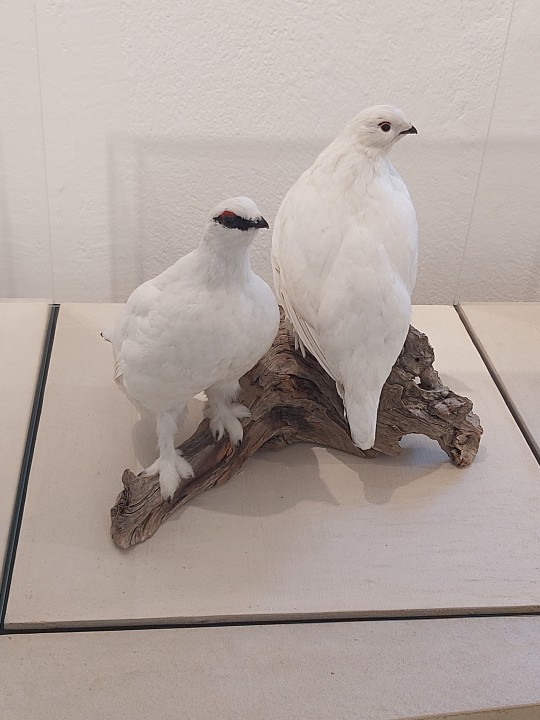
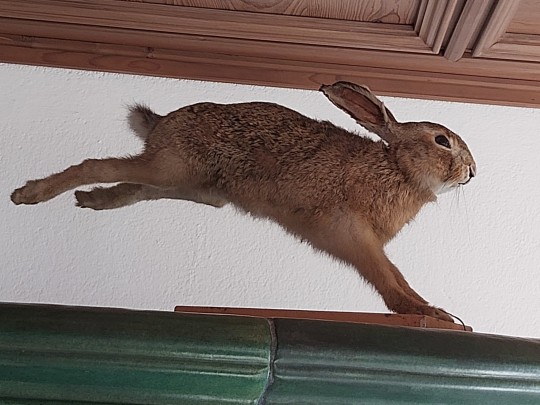

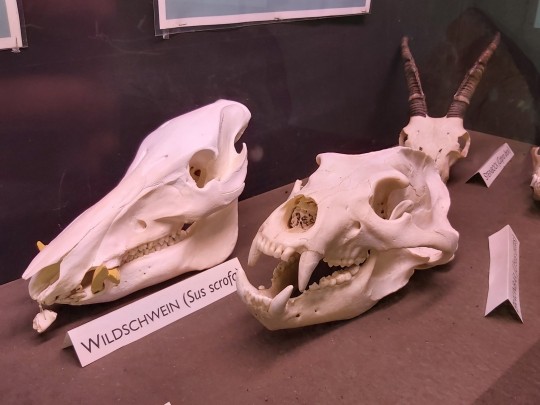

Visited the Alpenzoo in Innsbruck, Austria! They had a few mounts on display, here is part 1
Left to right: mountain hare, alpine marmot, ptarmigan, brown hare, alpine chough, wild boar and european brown bear skull, alpine ibex and european wolf skull
24 notes
·
View notes
Text
We descended from the pass into what was now inner Pemako and entered a valley carpeted in alpine flowers of every describable scent and color. We walked along the edge of a lake where primroses and white, pink, and purple asters cascaded from the tall grass along its banks. According to the neyigs, Kawa Tulku said, this area below the pass is called Sangye Menla and is filled with healing plants. He began inspecting the flowers closely—yellow ones, purple ones, white ones—and then began eating what looked like small, blue hare-bells. He urged me to join him. They tasted of pepper and spice.
As we walked, Kawa Tulku spoke of tsalududorje, the indestructible naga demon grass, one of the miraculous plants described in the Pemako neyigs. A single blade of this grass can cure innumerable diseases, he said, and open one’s eyes to other realms. As stated in Padmasambhava’s terma, Clear Mirror for Identifying the Five Miraculous Plants:
Any deficiency of the five sense organs will be healed and one will attain miraculous powers. One’s body will transform like a snake shedding its skin.
Throughout these proceedings, Kawa Tulku, the Jolly Lama, laughed quietly. Our quest for Yangsang Né obviously amused him, even though it was something he himself was actively seeking. Was it our approach that he found so humorous? According to tradition, the key to Yangsang can be found on the circumambulation route around Kundu Dorsempotrang, but what the key was could only be guessed at.
“What is this Yangsang?” Christiaan finally asked as we sat along the grassy banks above the river. “Is it a real place or was it just a fantasy to inspire Tibetans to travel to these wild lands?’
Hamid attempted an explanation: “It seems more like a hypothesis, a vision of what lies in potential. Although no one has found Yangsang yet, it doesn’t mean it doesn’t exist. It may simply mean that no one has looked for it in the right way.” In tribute to Oy’s earlier comments by the lake, he added, “It’s simply not perceivable to science as we currently know it.”“Maybe that’s what the key is all about,” Oy said, joining the conversation, “a new way of investigating nature. Maybe Yangsang actually is some unknown dimension of time and space. If we limit ourselves only to what we can perceive, or prove, we rob reality of all its magic. Science is sometimes like a blind person claiming there’s nothing there, or like someone who is deaf claiming that music does not exist. Just because something can’t be proved scientifically doesn’t mean it doesn’t exist.”
“It may be linked to the plants that Kawa Tulku is looking for,” Hamid suggested. “Like the vision plants used by shamans in the Amazon, the plants described in the neyigs may offer a missing ingredient in how we percieve reality; something that bridges the gap between what we imagine to be real and what actually is real.”Oy interjected, “You mean between what we know to be true intuitively and what can be empirically measured. Empirical knowledge is only one kind of knowledge. It’s not truth. Even with microscopes, what we see with our eyes is only a narrow spectrum of light between red and violet. We see only five percent of the ‘real’ world. Most of what’s out there remains hidden.”
“Maybe Yangsang’s like particle physics,” Christiaan offered, “in that it conforms to one’s method of observation, and that one only sees what one expects to see.”“Whatever Yangsang is,” I added, “we certainly wouldn’t find it using compasses and maps.”
-- Ian Baker, The Heart of the World
3 notes
·
View notes
Text
Numberblocks Animals
0 - Housefly
1 - Chipmunk
2 - Hamster
3 - Triceratops
4 - Coyote
5 - Tasmanian Wolf
6 - Quoll
7 - Archaeopteryx
8 - Octocat (Octopus/Cat hybrid)
9 - Grey Wolf
10 - Pterodactyl
11 - Red Panda
12 - Greyhound
13 - Armadillo
14 - Velociraptor
15 - Tree Porcupine
16 - Stegosaurus
17 - Dalmatian
18 - Gliding Lizard
19 - Marble Fox
20 - Tyrannosaurus Rex
21 - Alpine Ibex
22 - Giant Panda
23 - Platypus
24 - Flying Squirrel
25 - Echidna
26 - Pangolin
27 - Glyptodon
28 - Flamingo
29 - Lynx
30 - Xenoceratops
31 - Wombat
32 - Cape Hare
35 - Highland Cow
36 - Pronghorn
40 - Siberian Husky
42 - Saurolophus
45 - Sabertooth Tiger
49 - Kangaroo
50 - Wolverine
55 - Peregrine Falcon
60 - Brontosaurus
64 - Purplish Jay
70 - Scarlet Macaw
80 - Octolion (Octopus/Mountain Lion Hybrid)
81 - Raccoon
90 - Irish Wolfhound
100 - Woolly Mammoth
8 notes
·
View notes



